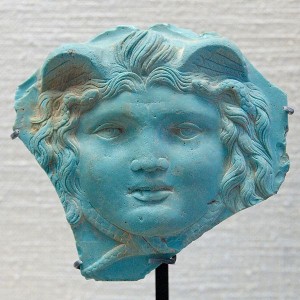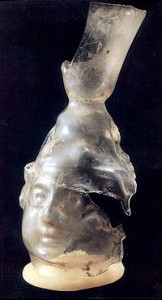 Each week, I’m torn between two warring emotions as I bear a large blue box of empty wine bottles and other glass detritus into the back alley. As I set the bin out for pick-up, I feel a certain satisfaction in a civic duty well done, dispatching this jumble of glass to the recyclers. But this personal pleasure battles with a something far less noble. I pray the neighbors aren’t monitoring my alcohol consumption.
Each week, I’m torn between two warring emotions as I bear a large blue box of empty wine bottles and other glass detritus into the back alley. As I set the bin out for pick-up, I feel a certain satisfaction in a civic duty well done, dispatching this jumble of glass to the recyclers. But this personal pleasure battles with a something far less noble. I pray the neighbors aren’t monitoring my alcohol consumption.
I always assumed that such recycling (soul-baring) was the brain child (fault) of modern environmentalists. But nothing could be further from the truth, as I discovered this week. Some 1700 years ago, inhabitants of Roman Britain were dutifully recycling their glass too. And the more things crumbled and fell apart in the Roman Empire, the more these ancient Brits recycled.
First a little background. The Romans adored beautiful glass and Roman glass makers excelled at making it. They knew how to blow glass, mould glass, cast glass, and cut it into cameos. They knew how to make glass so clear that you could swear it wasn’t there, and glass so deeply cobalt blue that it looked like a jewel. They could make goblets so thin that it was an exquisite pleasure to drink from them. And they even knew how to make small opaque windows. Modern excavators have found bits of these windows while excavating in Pompeii.
 The most desirable glass of all in Roman eyes, however, was colorless, as closely resembling rock crystal as possible. To learn more about it, two archaeologists recently analyzed the chemical composition of more than 100 samples of this colorless glass dating to the 3rd and 4th centuries. In doing so, the researchers discovered something rather puzzling.
The most desirable glass of all in Roman eyes, however, was colorless, as closely resembling rock crystal as possible. To learn more about it, two archaeologists recently analyzed the chemical composition of more than 100 samples of this colorless glass dating to the 3rd and 4th centuries. In doing so, the researchers discovered something rather puzzling.
To make clear glass, Roman artisans had two main choices. They could use a very pure silica sand that contained virtually no iron: such was found along the Volturno River in southwestern Italy. Or the glassmakers could add a mineral decolorizer–either antimony or manganese–to the silica. Of these, antimony was far preferred because it was stronger and because it created an especially sparkling glass.
The new study shows, however, that nearly half the samples dating to the 4th century contained both antimony and manganese– a kind of chemical overkill. And based on the proportion of antimony to manganese, the two archaeologists concluded that artisans in this period were taking scrap glass decolorized with manganese and adding it to glass that they were stripping of color with antimony. In other words, these Romans were scrupulously recycling.
But they weren’t doing it be green. Not at all. They were doing it because their empire was collapsing around them and they could no longer lay hands on all the colorless glass they craved from Italy. In the midst of all that painful chaos, they still desired the very best.
Upper Photo: Gorgoneion (head of Medusa). Opaque glass paste, Roman work, 1st–2nd century AD. Photo courtesy of Marie Lan Nguyen.
Lower Photo: Roman glass from the 2nd century. Photo courtesy of Sarajevo Earth History Museum